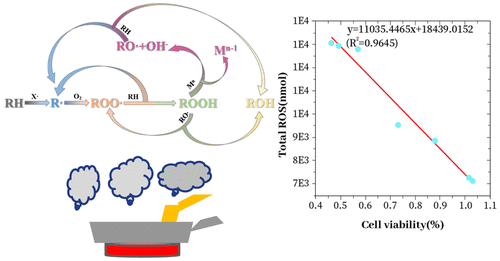当前位置:
X-MOL 学术
›
Environ. Sci. Technol.
›
论文详情
Our official English website, www.x-mol.net, welcomes your
feedback! (Note: you will need to create a separate account there.)
Assessing the Effect of Reactive Oxygen Species and Volatile Organic Compound Profiles Coming from Certain Types of Chinese Cooking on the Toxicity of Human Bronchial Epithelial Cells.
Environmental Science & Technology ( IF 10.8 ) Pub Date : 2020-06-09 , DOI: 10.1021/acs.est.9b07553 Lina Wang 1, 2 , Linyuan Zhang 3 , Zoran Ristovski 4 , Xinran Zheng 4 , Hongli Wang 5 , Li Li 6 , Jun Gao 7 , Farhad Salimi 8 , Yaqin Gao 5 , Shengao Jing 5 , Lin Wang 1, 2 , Jianmin Chen 1, 2 , Svetlana Stevanovic 4, 9
Environmental Science & Technology ( IF 10.8 ) Pub Date : 2020-06-09 , DOI: 10.1021/acs.est.9b07553 Lina Wang 1, 2 , Linyuan Zhang 3 , Zoran Ristovski 4 , Xinran Zheng 4 , Hongli Wang 5 , Li Li 6 , Jun Gao 7 , Farhad Salimi 8 , Yaqin Gao 5 , Shengao Jing 5 , Lin Wang 1, 2 , Jianmin Chen 1, 2 , Svetlana Stevanovic 4, 9
Affiliation

|
The International Agency of Research on Cancer identifies high-temperature frying, which features prominently in Chinese cooking, as producing group 2A carcinogens. This study simultaneously characterized particulate and gaseous-phase cooking emissions, monitored their reactive oxygen species (ROS) concentrations, and evaluated their impact on genetic damage and expression in exposed human bronchial epithelial cells. Five types of edible oil, three kinds of seasonings, and two dishes were assessed. Among tested edible oils, heating of soybean oil released the largest particle number concentration (2.09 × 1013 particles/(g cooking material and oil)·h) and volatile organic compounds (VOCs) emissions (12103.42 μg/(g cooking material and oil)·h). Heating of lard produced the greatest particle mass concentration (0.75 mg/(g cooking material and oil)·h). The main finding was that sunflower and rapeseed oils produced the highest ROS concentrations (80.48 and 71.75 nmol/(g cooking material and oil)·h, respectively). ROS formation most likely occurred during the autoxidation of both polyunsaturated and monounsaturated fatty acids. Among all the tested parameters, only ROS concentrations exhibited consistency with cell viability and showed significant correlations with the expression levels of CYP1A1, HIF-1a, and especially with IL-8 (the marker for oxidative stress within the cell). These findings indicate that ROS concentration is potentially a suitable metric for direct assessment of exposure levels and potential toxicity.
更新日期:2020-07-21











































 京公网安备 11010802027423号
京公网安备 11010802027423号